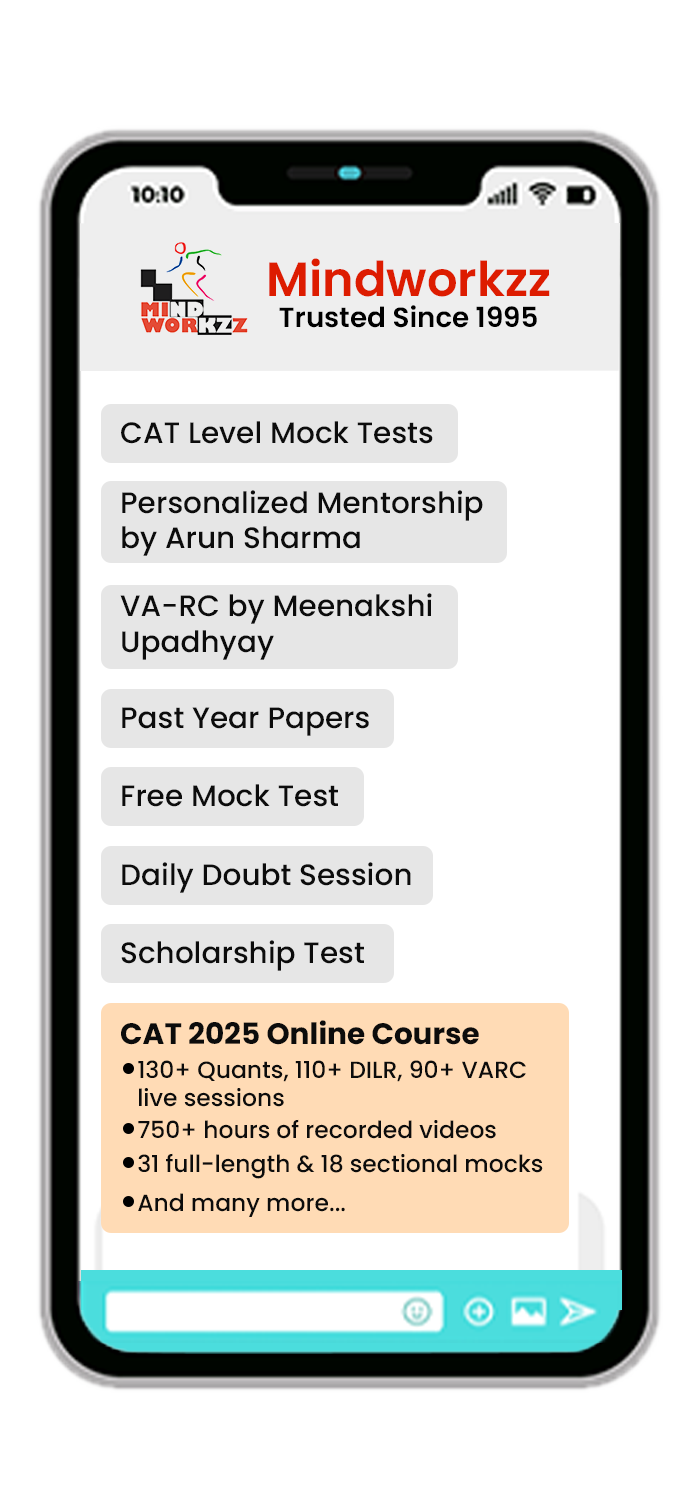This is a very crucial question “What after CAT Exam 2025?”. For many students, CAT is not just a normal exam, it is a turning point in life as it offers the gateway to get into the topmost and prestigious B-schools that significantly elevate one’s career. However, cracking the CAT is just the first crucial phase- what comes next is as important as CAT. And plays equal role in your MBA journey.
Let’s explore more about “What after CAT Exam 2025” and gain more insights.

What after CAT Exam 2025: Lets Know
The CAT 2025 Exam is scheduled to be conducted on 30th November 2025, with results expected in December. Many candidates appearing for the exam finds themselves uncertain about the scenarios after the CAT Exam.
Here is what you should keep in mind after CAT 2025 Exam:
1. Interpreting CAT Score and Percentile
After the CAT results are declared, the initial foremost task is to understand your performance as shown in the scorecard, which includes two most important components:
Here’s what you should know about the score card:
There are two terms in score card; Score and Percentile
- Score: Represents the total marks secured in each of the section as well as overall.
- Percentile: This shows the relative standing among all the test takers
2. Evaluate your CAT performance
Thoroughly assessing your CAT performance is very crucial. It not only helps you to identify your strengths and weaknesses but also guides your next course of action. By identifying the sections where you excelled and struggled you can just:
- Strategize the preparation for other MBA exams like SNAP, NMAT, CMAT, and other OMETS.
- Focus on next phase areas like Written Ability Test (WAT), Group Discussions (GD), and Personal Interviews (PI).
- Decide which school you need to move ahead with based on your percentile.
- Also, gain clarity on weather to pursue alternative options such as taking the test again next year or exploring other management programs or colleges.
3. Get ready for other MBA exams
If you are unsure about your CAT performance, it’s wise not to pull all your eggs in one basket. Many top B -schools accept scores from other management exams like XAT, SNAP, NMAT, MAT, CMAT and other.
Here’s why preparing for such exams can be highly beneficial:
- Expanded opportunities: As each of the university opens doors for different set of prestigious institutions.
- Diverse Exam patterns and type: These tests often have varied patterns, formats, and level of difficulty giving chance to showcase your aptitude.
- Focused Preparation: CAT exam preparation already gives the candidates a very strong foundation, which can be fine-tuned with all other management exam patterns and level.
- Back Up Plans: Performing well in these exams opens wider opportunity even if CAT does not go well as planned.
- Calls for Interview: A good score in exams like SNAP, NMAT, XAT, CMAT will offer interview calls from reputed top B -schools like NMIMS, SIBM, XLRI.
4. Start getting ready for interviews
After the CAT exam is done, the next bigger step is to gear up yourself for rounds like Personal Interviews (PIs), Group Discussion (GDs) and Written Ability Test (WATs).
- Research B -schools: Understand programs, values, alumni, and interview styles.
- Practice mocks: Keep attending and watch mock interviews as it will help to build confidence and improve response delivery.
- Know your profile: Be ready to discuss about yourself, background, academics, aim, goals, skills, work experience, internships, or trainings (if any), justify gap years (if any).
- Stay updated: It is very important to stay updated with latest news, current affairs, industry trends as this will help you to perform well in PI, GD, and WAT.
- Work on communication and body language: Maintain a confidence and clear articulation body language.
5. Strengthen your profile
The profile of MBA aspirants plays a very important role in admission process for many B-schools. It reflects the candidates’ overall achievements, potential beyond academics, overall personality.
- Gain Practical Experience: Take up part-time projects, volunteer roles, internships, or projects to show exposure.
- Participate in seminars and workshops: Participating in such workshops will enhance knowledge.
- Engage in extra co-curricular activities: Participation and involvement in arts, spots, social activities, and leadership roles reflects an all-rounded personality.
- Build Certification: Enrol in online courses related to analytics, management or any other related to your interest.
- Work on essays and SOPs: Craft a good Statement of Purpose tailored for each of the B-school application.
6. Build your network
After CAT, connect with current students, fellow aspirants, and alumni to gain insights into interview preparation and information about B-schools.
- Join Forums and Groups: Use WhatsApp groups, LinkedIn, and other social networking sites to stay updated.
- Talk to alumni: Understand placements, selection process, campus about the targeted institutions.
- Attend Webinars: Gain exposure to B-schools culture and expectations.
- Find mentors: Seek guidance from seniors, toppers, or any experienced faculties.
7. Keep wider option open
If top IIMs seems to be out of reach, there is no need to worry.
Many other top-B school also provides good career growth with excellent placement opportunities.
- Explore good alternatives: Consider institutes that accepts scores of XAT, NAMT, SNAP, CMAT etc.
- Apply intelligently: Choose colleges based on your entrance score, ROI, goals and placement offers.
8. Get ready for counselling process
After the exam, keep your documents prepared like academic certificates, work experience or internship certificates, ID proofs, and phots etc.
- Know the process: Check if counselling is offline or online and understand the steps involved.
- Be prepared: Keep both digital and physical copies both ready with you.
- Stay updated: Track institutes official websites and emails for important updates and information.
What after CAT Exam 2025: Benefits and Scope after CAT Exam
After CAT 2025, individuals have several careers to build up and explore, including finance, banking, entrepreneurship, investment banking, management consulting etc.
The CAT exam is the initial gateway to top MBA programs, thus providing diverse business opportunities and career growth.
Detailed career options like:
- Finance: Many MBA aspirants choose the finance sector and seek jobs. Finance sector provides excellent role in risk management, equity research, or investment baking also.
- Marketing: MBA aspirants can find job roles in market research, marketing analysis, and other related job roles.
- Entrepreneurship: The CAT exam helps an individual to develop knowledge and skills to start their own business.
- Marketing Consulting roles: CAT gradates can seek excellent opportunities in consulting firms like Bain, BCG, McKinsey.
- Business Intelligence and Data Analytics: CAT graduates can find career opportunities in the field of data analytics, business intelligence, and other related roles.
- Alternative options: Additional opportunities like project management, operation, and human resources.
What after CAT Exam: Process to do after CAT Exam
The below mentioned steps need to be followed to perform after CAT exam:
- CAT Scorecard
After the release of results, candidates need to download the CAT score card from official website and analyse the overall performance.
- Shortlisting of Institute
After the release of CAT scores, top B-Schools like IIMs or non-IIMs begin to shortlist the students based on their scores and other factors like profile, academic background, work experiences, extra-curricular activities, or diversity considerations.
- GD-PI/WAT Preparation
Candidates must begin their preparation for GD-PI and WAT based on their targeted colleges which are conducted by the institutes themselves. Candidates will need to participate in these rounds ones they are shortlisted based on their scores.
- Application information and process
Candidates have to submit their CAT scores and other necessary details to their respective MBA colleges they are targeting.
- GD-PI/WAT Rounds
Ones you are shortlisted on the basis of your CAT scores, you will be called for GD-PI/WAT sessions. These are different rounds of selection processes and candidates need to excel in these in order to get into their dream college.
- Final selection and release of merit list
At last, the institutes will release final merit list based on overall performance (CAT Score, GD-PI/WAT performance, profile). Admission offers are provided to students who excel in all the rounds of selection.
Also read, 12 Must Do Things to Crack GDPI and WAT
What after CAT Exam: Post-CAT Expert Tips
- Start WAT-PI preparation early – Don’t wait for results
- Track all B-School deadlines – Dates vary by college
- Read Daily – Focus on editorials & business news
- Work on your resume – Highlight achievements
- Give mock interviews – Practice with mentors regularly
- Know your CAT score range – Apply accordingly
- Apply beyond IIMs, target good non-IIMs – Target other non-IIMs too
- Join GD-PI Preparation groups – Learn from friends
- Follow current affairs – Useful for GDs, WAT, and essays
- Stay confident & consistent
Conclusion
After the CAT exam is over, your destination to get into top-B school is not that far. Prepare yourself for GD-PI, and WAT rounds, apply to various B-schools, and build up your profile. Stay updated on admission-related details.
FAQs What after CAT Exam 2025
After the CAT exam, focus on preparing for GD-PI, and WAT rounds for top-B schools. Keep an eye on the cut-offs, shortlist announcements, and apply to other good institutes. Spend some time to update your resume with relevant diverse skills, internships, trainings etc.
After CAT exam, you must participate in selection process of various MBA colleges and participate in GD-PI, WAT rounds.
After getting good percentile in CAT, candidates can apply for top B-schools and enhance abilities and skills to build up career well, get scholarships, good placement etc.
Most of the colleges will ask for academic documents, entrance exam score card, and other documents of work experience, internships, statement of purpose, ID proofs, and letters of recommendation.


